Porsche's 911 GT3 RS is a High-Octane Sports Car For The Road, Built With Advanced Racing Technology
- 22nd Aug 2022
- 1896
- 0

The 911 GT3 RS, a high-performance sports vehicle that can legally be driven on public roads, was recently presented by Porsche. It makes extensive use of racetrack technology.
The street-legal high-performance sports vehicle makes full use of racing technology and ideas (911 GT3 RS: Fuel consumption* combined (WLTP) 13.4 l/100 km, CO2 emissions* combined (WLTP) 305 g/km, Fuel consumption* combined (NEDC) 12.7 l/100 km, CO2 emissions* combined (NEDC) 289 g/km). Even beyond the high-revving naturally aspirated engine with racing DNA and sophisticated lightweight construction, the 911 GT3 RS is most closely related to its race sibling, the 911 GT3 R, via its cooling and aerodynamic systems.
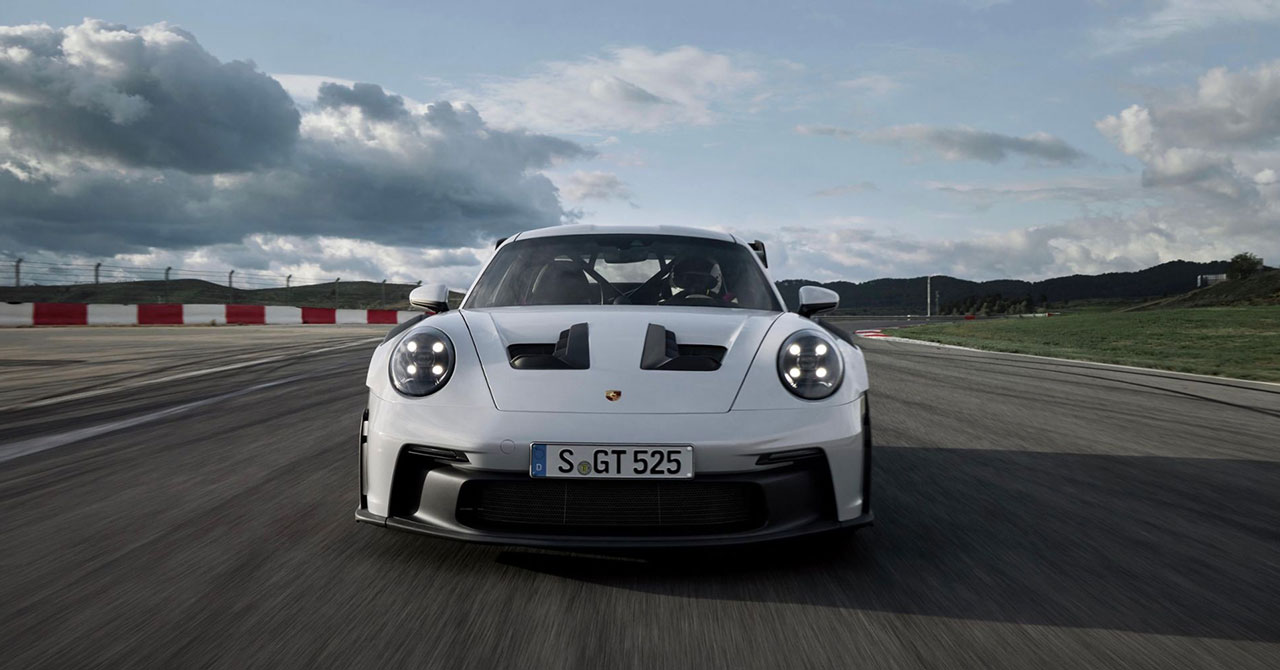
Inspired by racing, a central radiator design forms the basis for active aerodynamics.
The 911 RSR, which won its class at Le Mans, and the later 911 GT3 R introduced the notion of a central radiator, which provides the foundation for a large performance improvement. In place of the three radiators seen on prior 911 models, the new 911 GT3 RS has a big, angled radiator in the car's nose, where the trunk is placed on older 911 models. This has made it feasible to insert active aerodynamic features into the freed-up space on the sidewalls.
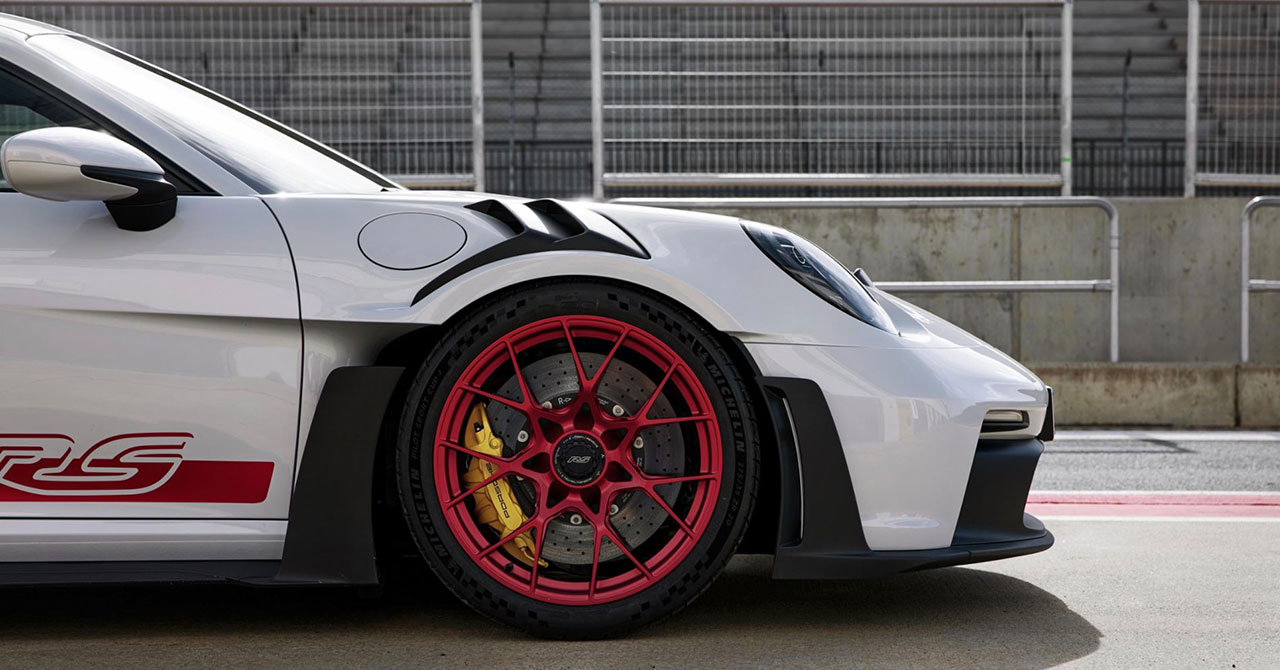
At 200 kilometres per hour, continuously adjustable wing components in the front and on the two-part rear wing, in conjunction with a variety of additional aerodynamic measures, produce a total of 409 kilogrammes of downforce. This indicates that the new 911 GT3 RS creates twice as much downforce as its predecessor from the 991.2-generation and three times as much as the current 911 GT3. The total downforce at 285 km/h is 860 kg.

A drag reduction system (DRS) is first installed in a production Porsche. To achieve minimal drag and greater speeds on straight stretches of the track, the DRS enables the wings to be flattened at the touch of a button, within a predetermined operational range. During emergency braking at high speeds, the airbrake function is activated: the front and rear wing components are placed to their maximum position, generating an aerodynamic deceleration effect that considerably assists the wheel brakes.
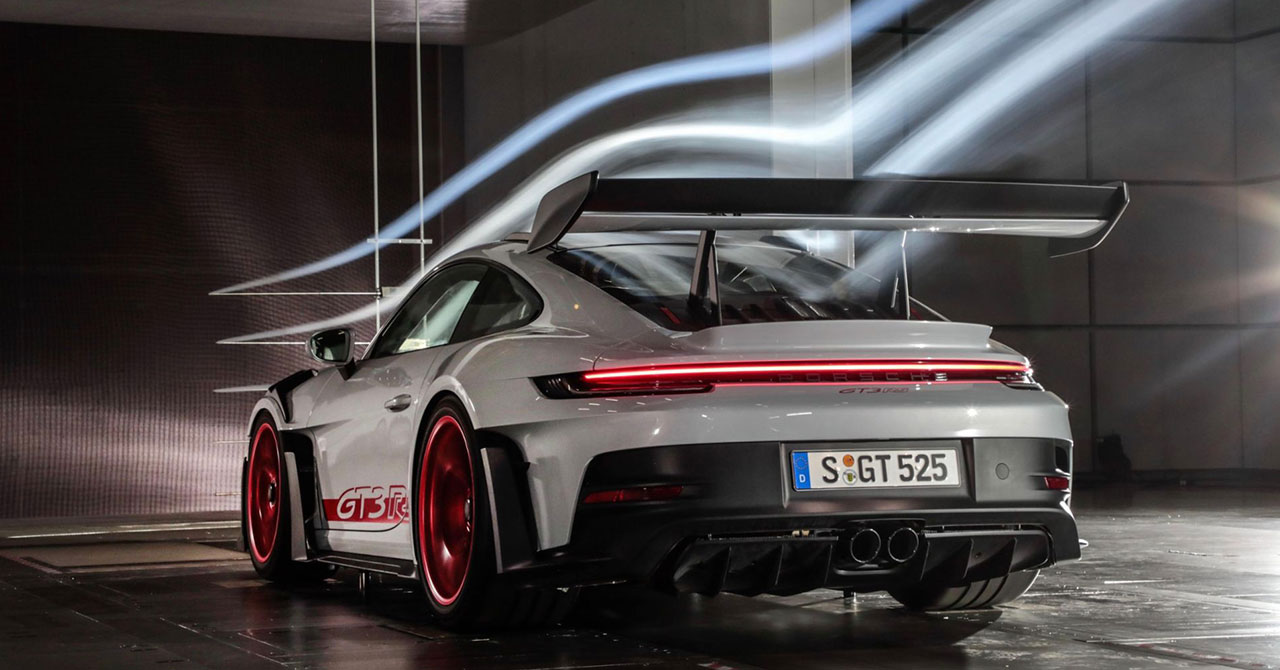
The design of the new Porsche 911 GT3 RS is distinguished by the abundance of aerodynamic components. Significantly bigger in all dimensions, the GT sports car's swan-neck-supported rear wing is the most obvious feature. The rear wing is composed of a fixed main wing and an adjustable upper wing section.
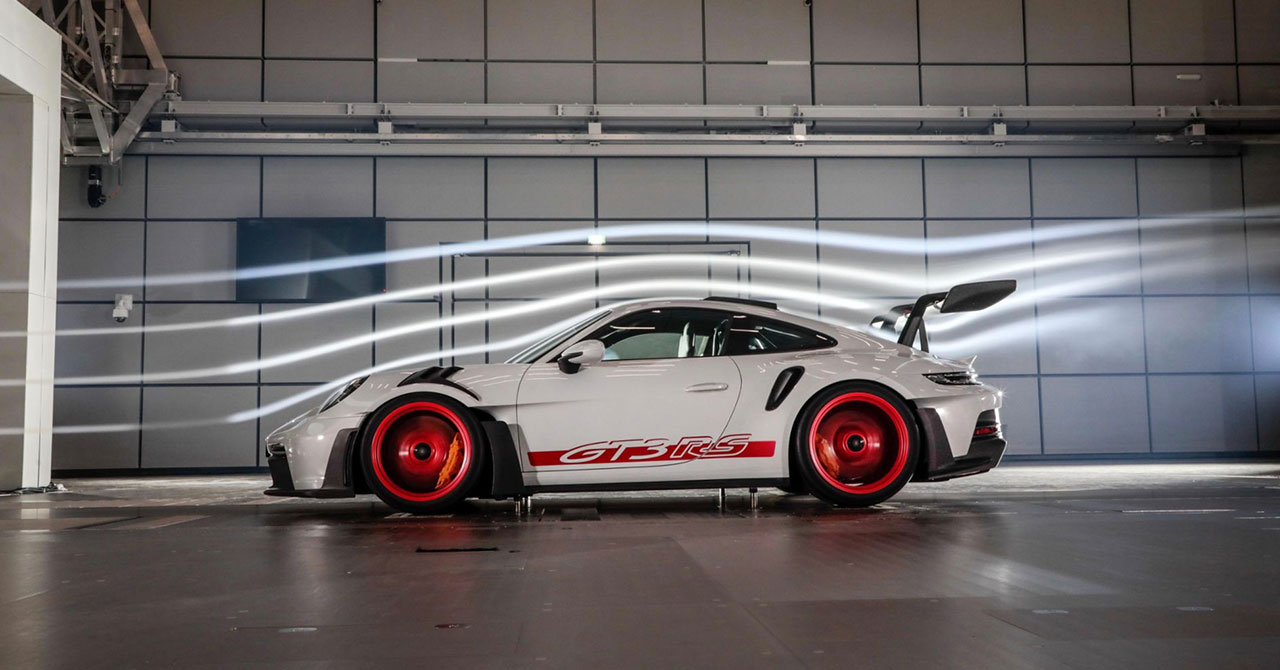
On a Porsche production vehicle for the first time, the top edge of the rear wing is higher than the roof. In addition, the front end of the 911 GT3 RS no longer contains a front spoiler, but rather a front splitter that separates airflow over and under the vehicle. Sideblades guide air precisely outward. Ventilation of the front wheel arches is supplied through louvred holes in the front wings.
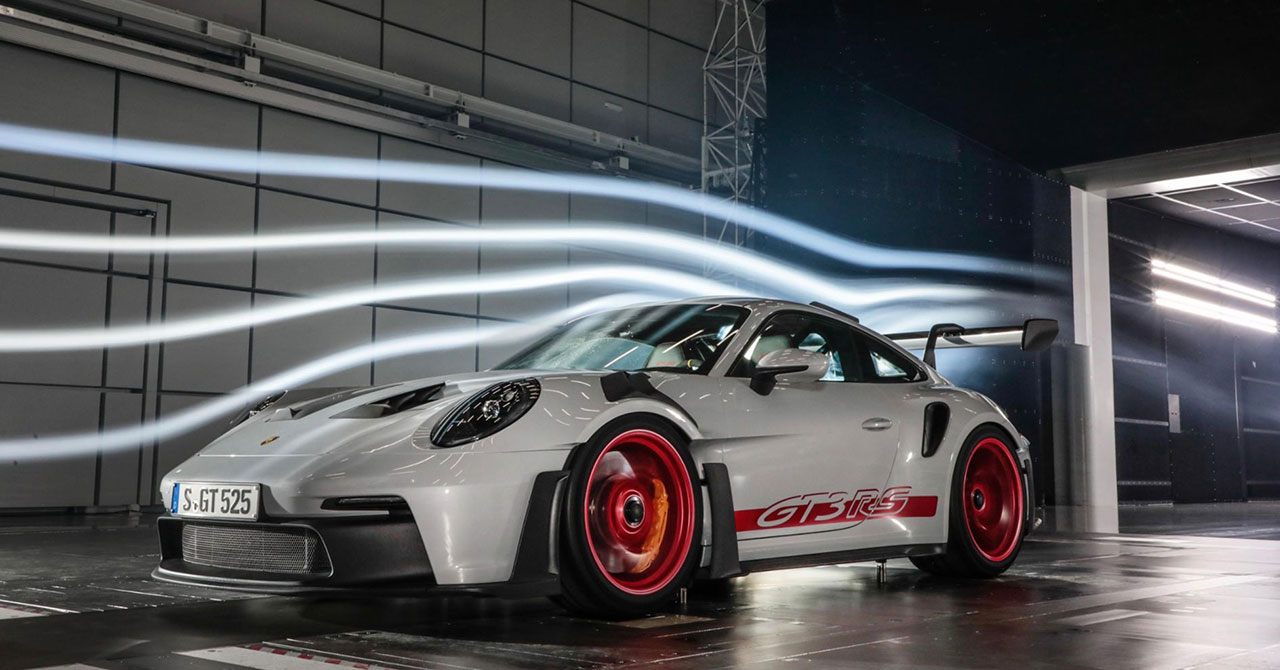
The street-legal high-performance sports vehicle makes full use of racing technology and ideas (911 GT3 RS: Fuel consumption* combined (WLTP) 13.4 l/100 km, CO2 emissions* combined (WLTP) 305 g/km, Fuel consumption* combined (NEDC) 12.7 l/100 km, CO2 emissions* combined (NEDC) 289 g/km). Even beyond the high-revving naturally aspirated engine with racing DNA and sophisticated lightweight construction, the 911 GT3 RS is most closely related to its race sibling, the 911 GT3 R, via its cooling and aerodynamic systems.

Inspired by racing, a central radiator design forms the basis for active aerodynamics.
The 911 RSR, which won its class at Le Mans, and the later 911 GT3 R introduced the notion of a central radiator, which provides the foundation for a large performance improvement. In place of the three radiators seen on prior 911 models, the new 911 GT3 RS has a big, angled radiator in the car's nose, where the trunk is placed on older 911 models. This has made it feasible to insert active aerodynamic features into the freed-up space on the sidewalls.
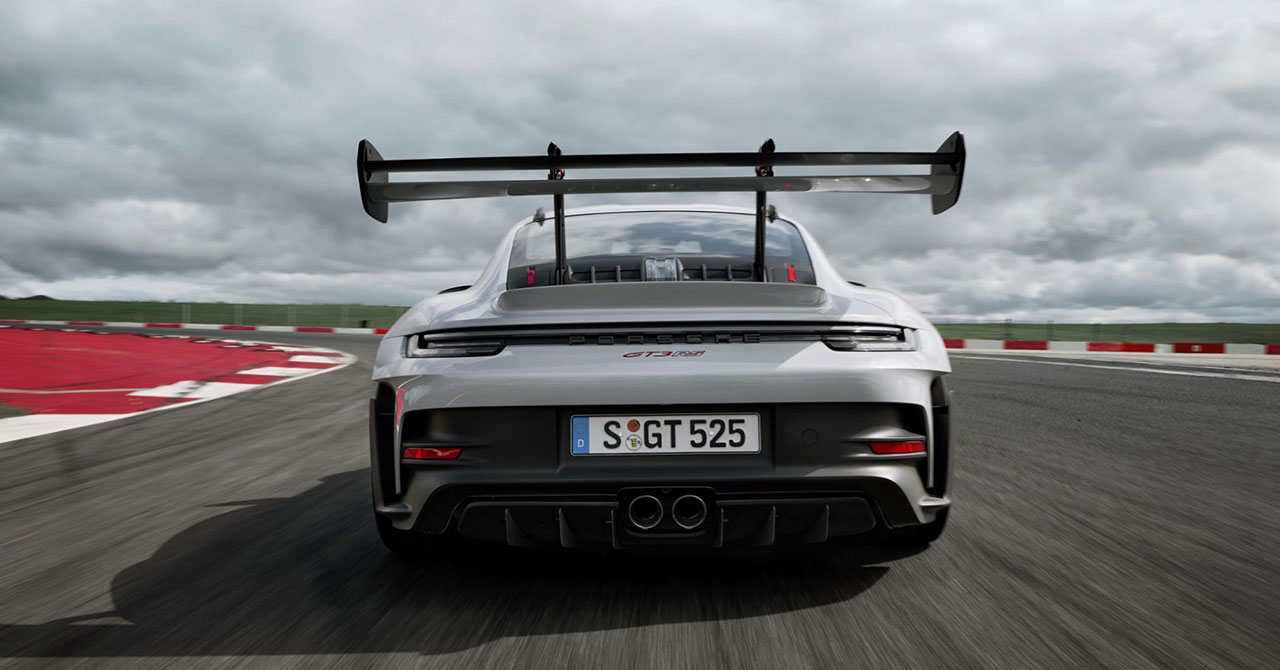
At 200 kilometres per hour, continuously adjustable wing components in the front and on the two-part rear wing, in conjunction with a variety of additional aerodynamic measures, produce a total of 409 kilogrammes of downforce. This indicates that the new 911 GT3 RS creates twice as much downforce as its predecessor from the 991.2-generation and three times as much as the current 911 GT3. The total downforce at 285 km/h is 860 kg.

A drag reduction system (DRS) is first installed in a production Porsche. To achieve minimal drag and greater speeds on straight stretches of the track, the DRS enables the wings to be flattened at the touch of a button, within a predetermined operational range. During emergency braking at high speeds, the airbrake function is activated: the front and rear wing components are placed to their maximum position, generating an aerodynamic deceleration effect that considerably assists the wheel brakes.
The design of the new Porsche 911 GT3 RS is distinguished by the abundance of aerodynamic components. Significantly bigger in all dimensions, the GT sports car's swan-neck-supported rear wing is the most obvious feature. The rear wing is composed of a fixed main wing and an adjustable upper wing section.
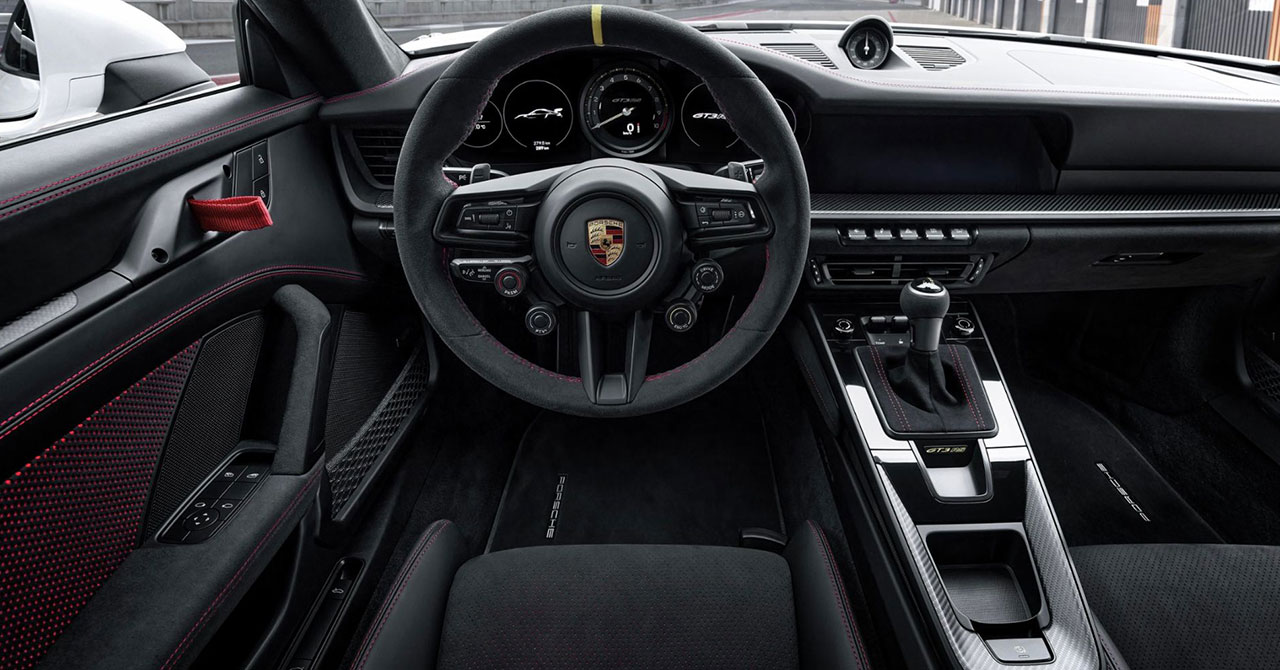
On a Porsche production vehicle for the first time, the top edge of the rear wing is higher than the roof. In addition, the front end of the 911 GT3 RS no longer contains a front spoiler, but rather a front splitter that separates airflow over and under the vehicle. Sideblades guide air precisely outward. Ventilation of the front wheel arches is supplied through louvred holes in the front wings.
Inlets behind the front wheels, modelled after the classic 911 GT1 that won Le Mans, alleviate the dynamic pressure in the wheel arches. Sideblades located behind the intake guide air to the side of the vehicle. Large nostrils on the front lid allow air to escape from the centrally-located radiator. Roof fins guide air outward, resulting in reduced air intake temperatures towards the back.
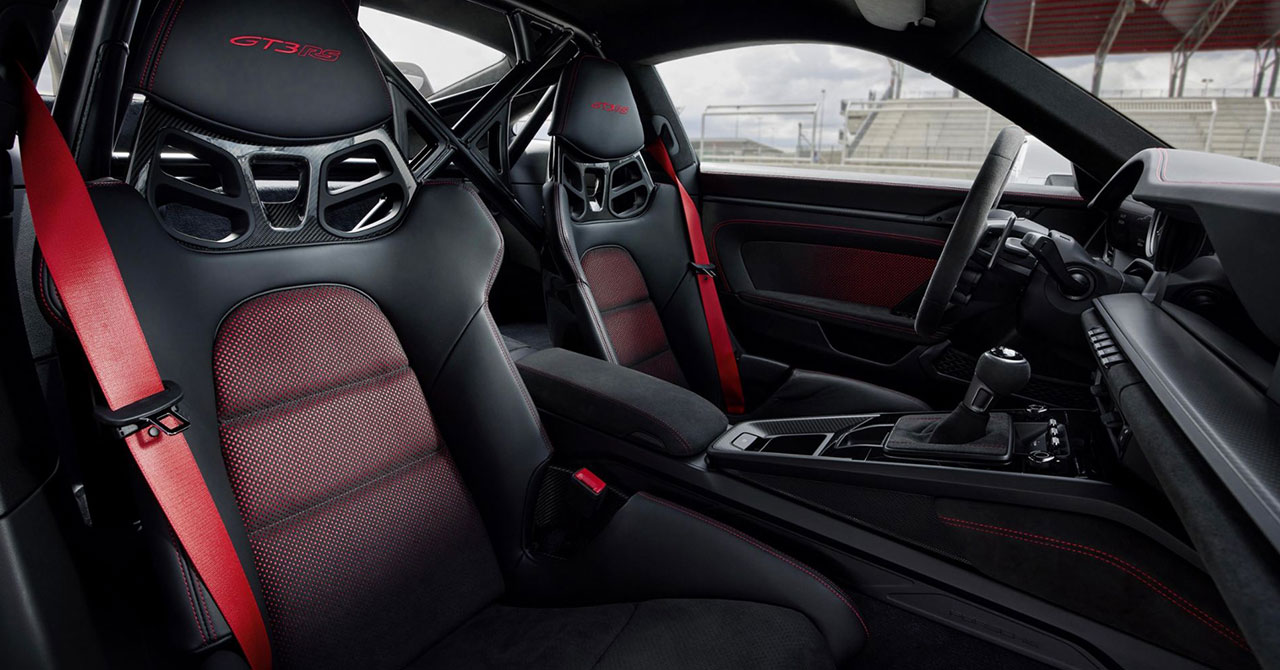
The holes in the rear side panel of the Porsche 911 GT3 RS serve just to increase aerodynamics and not to draw in process air. In addition to an intake and a sideblade, the rear wheel arch is equipped with a sideblade to optimise airflow. The rear diffuser is derived from the 911 GT3 and has been modified somewhat.
Track suspension with cockpit-adjustable damping
Even the suspension receives aerodynamic consideration. Due to the fact that the wheel arches of the new Porsche 911 GT3 RS are susceptible to strong airflows, the components of the double-wishbone front axle have teardrop-shaped shapes. These aerodynamically efficient linkages augment the front axle's downforce by around 40 kg at peak speed and are otherwise exclusive to high-end racing applications. Due to the wider track (29 millimetres wider than the 911 GT3), the front double-wishbone axle links are likewise longer.
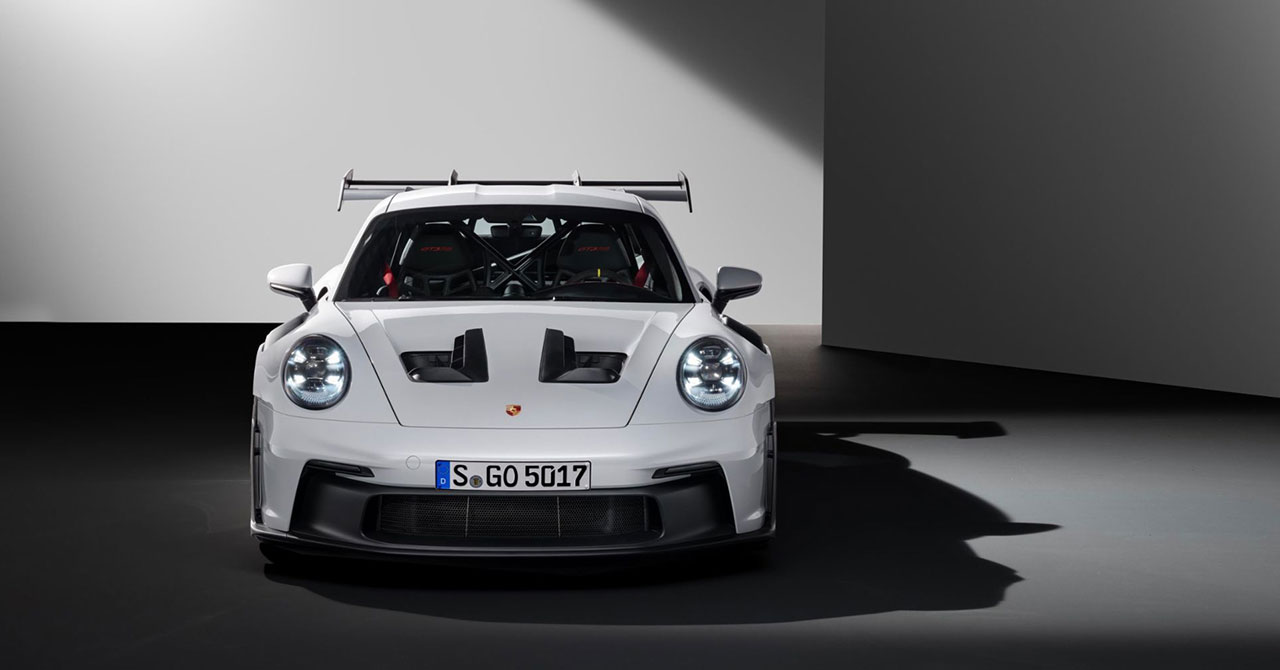
Suspension engineers have greatly decreased pitching during braking to guarantee that the balance of downforce between the front and rear axles is maintained even when braking from high speeds. The front ball joint of the lower trailing arm has been positioned lower on the front axle of the Porsche 911 GT3 RS. The rear multi-link axle has also been changed by modifying the spring rates. Here, the driver aid systems and rear-axle steering have a more dynamic configuration.
Normal, Sport, and Track are the three driving modes available on the 911 GT3 RS. Individual fundamental variables may be customised in Track mode. The rebound and compression damping of the front and rear axles may be modified independently and in many stages, among other options. The rear differential may also be changed via the steering wheel's rotary controls. This is accomplished swiftly and intuitively using a motorsport-inspired operating and display paradigm.
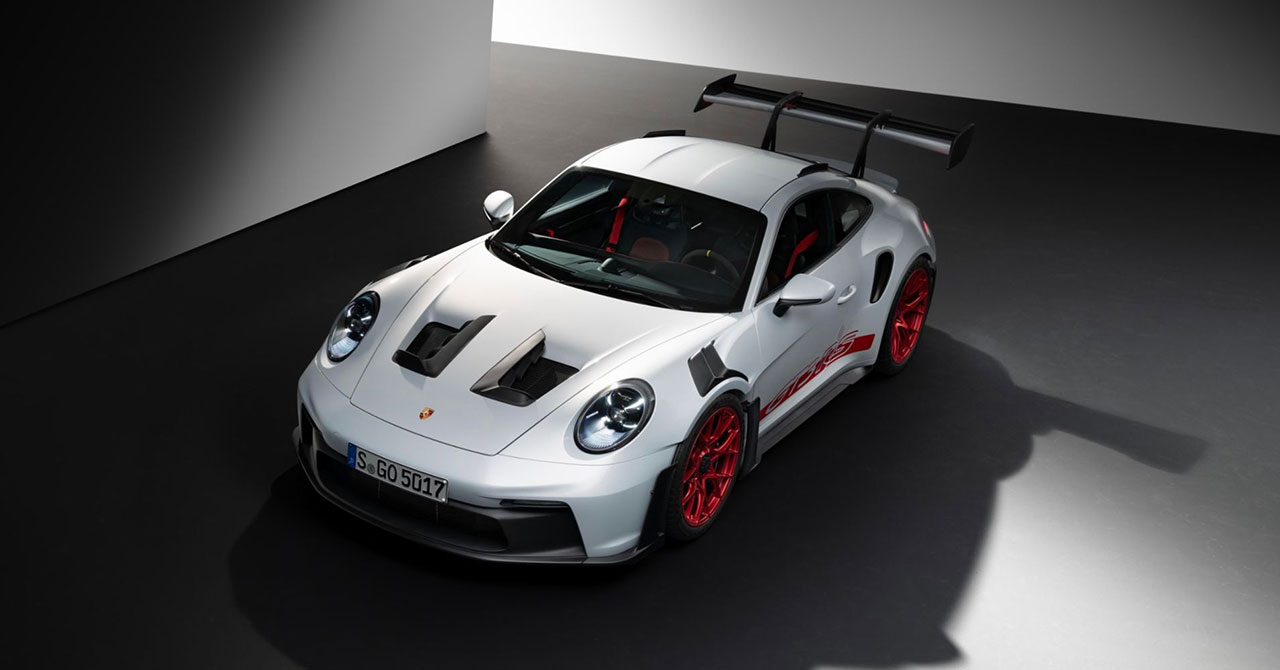
On the steering wheel are four independent rotary controls and a button for the Drag Reduction System (DRS). During the process of adjustment, the instrument cluster displays these rotational controls with clear images. The 911 GT3 RS also incorporates the track screen seen on the 911 GT3. The driver may restrict the digital displays on the two seven-inch side screens to simply relevant information at the press of a button. The gearshift indications on the left and right sides of the analogue tachometer are also borrowed from the GT3.
Four-liter, six-cylinder boxer engine with high revving
Compared to the 911 GT3, the 4.0-liter high-revving naturally aspirated engine has been further optimised. The power boost of 386 kW (525 PS) is principally the result of new camshafts with changed cam profiles. The single-throttle intake system and stiff valve drive are motorsport-derived. The Porsche Doppelkupplung (PDK) seven-speed transmission has a shorter overall gear ratio than the 911 GT3. Air intakes in the undercarriage guarantee that the gearbox can endure even the most severe stresses when used often on the track. In seventh gear, the 911 GT3 RS goes from 0 to 100 km/h in 3.2 seconds and achieves a peak speed of 296 km/h.
On the front axle, aluminium monobloc fixed-calliper brakes with six pistons each and 408 mm brake discs are used. Compared to the 911 GT3, the diameter of the pistons has been increased from 30 to 32 millimetres. The thickness of the discs has also been raised from 34 to 36 millimetres. The rear axle retains its 380 mm brake discs and four-piston fixed callipers.
The Porsche Ceramic Composite Brake (PCCB) features front discs of 410 millimetres and rear discs measuring 390 millimetres. Standard equipment on the Porsche 911 GT3 RS is forged light-alloy centre-lock wheels. Front and rear street-legal sports tyres measuring 275/35 R 20 and 335/30 R 21 respectively provide a high degree of mechanical grip.
Lightweight construction throughout
Since the classic 911 Carrera RS 2.7, intelligent lightweight construction has been a fundamental aspect of all RS models. Despite having many heavier components, the 911 GT3 RS weighs just 1,450 kg (kerb weight according to DIN) thanks to a variety of lightweight construction methods, including as the significant use of CFRP. CFRP is used to construct the doors, front wings, roof, and front lid, among other components. The interior also features lightweight CFRP, such as the standard full bucket seats.
Available with the Clubsport and Weissach
The interior of the new GT sports car is finished in typical RS fashion: black leather, Racetex, and a carbon-weave finish create a sporty, purist atmosphere. The Clubsport package is available on the 911 GT3 RS at no additional cost. This contains a rollover bar made of steel, a portable fire extinguisher, and six-point seat belts for the driver.
The Weissach package, which is available for an additional fee, includes far more. A carbon-weave treatment is applied to the front lid, roof, portions of the rear wing, and the top shell of the external mirrors. The front and rear anti-roll bars, rear coupling rods, and shear panel on the rear axle are composed of CFRP and contribute to a further improvement in driving dynamics. The rollover bar manufactured for the first time from CFRP is about six kg lighter than its steel counterpart.
A further feature of the Weissach package are the PDK shift paddles using magnet technology adapted from racing. This makes gear shifts more lively by providing a more accurate pressure point and audible click. Magnesium-forged wheels are optionally available with the Weissach package and save an additional eight kilos.
The 2023 Porsche 911 GT3 RS will be available in the United States by the spring of 2023.
 Suhas
Suhas


Comments
No comments yet.
Add Your Comment
Thank you, for commenting !!
Your comment is under moderation...
Keep reading luxury post